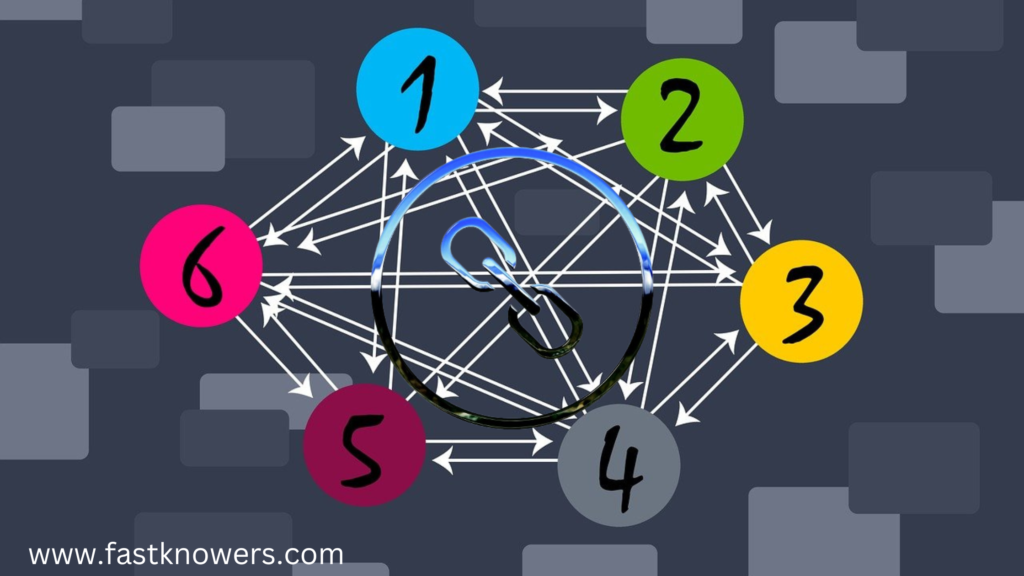
Is chemistry among your JAMB subject combination? If yes, then you have to find a way to how to score very high in it this year’s JAMB examination. In this article, we have discussed likely chemistry past questions and answers in JAMB which you can review for jamb 2022 preparation.
If you are an engineering students or a science student in general, chemistry must include in your JAMB subject combination. JAMB chemistry past questions and answers of some previous years are shown in this article below with their explanation step by step.
JAMB past questions and answers on Chemistry
1. X is crystalline salt of sodium. Solution of X in water turns litmus red produces a gas which turns lime water milky when added to sodium carbonate. With barium chloride solution, X gives a white precipitate which is insoluble in dilute hydrochloric acid. X is
- A. Na2,CO3
- B. NaHCO3
- C NaHSO4
- D Na2SO3
- E. Na2SO4.
Read this also: Flashlearners Jamb Application (how to download and activate).
2. The alkanol obtained from the production of soap is
- A. ethanol
- B. glycerol
- C. methanol
- D. propanol
- E. glycol
3. The flame used by welders in cotton metals is
- A. butane gas flame
- B. acetylene flame
- C. kerosene flame
- D. oxy-acetylene flame
- E. oxygen flame
4. Consecutive members of an alkane homologous series
differ by
- A. CH
- B. CH2
- C. CH3
- D. CnHn
- E. CnH2n+2
5. If an element has the lectronic configuration 1s2 2s2 2p6 3s2 3p2, it is
- A. a metal
- B. an alkaline earthmetal
- C. an s-block element
- D. a p-block element
- E. a transition element
6. Some copper (11) sulphate pentahydrate (CuSO45H2O), was heated at 120oC with the following results:Wt of crucible= 10.00 g;Wt ofcrucible +CuSO45H2O=14.98g; Wt of crucible + residue = 13.54g. Howmanymolecules of water of crystallization were lost? [H=1, Cu =63.5, O=16, S= 32]
- A. 1
- B. 2
- C. 3
- D. 4
- E. 5
7. The three-dimensional shape of methane is
- A. hexagonal
- B. tigonal
- C. linear
- D. tertrahedral
- E. cubical
Question 8-10 are based on the following
An unknown organic compound X has a relative molecular mass of 180. It is a colourless crystalline solid, readily soluble in water. X contains the element C, H, and O in the atomic ratio 1:2:1. The compound has a sweet taste and melts on heating. In the presence of yeast and in the absence of air X is converted to compound Y in the absence of air, X is converted to compound Y and colourless gas. Compound Y reacts with sodium metal to produce a gas Z which gives a ‘pop’ sound with a glowing splint. Y also reacts with ethanoic acid to give a sweet smelling compound W.
8. Compound W is
- A. a soap
- B. an oil
- C. an alkane
- D. an ester
- E. sucrose
9. Themolecular formula of X is
- A. C12H22O11
- B. C6H12O6
- C. C3H6O3
- D. C7H14O7
- E. C4H3O4
10. reaction of X with yeast forms the basic of the
A. plastic industry
B. textile industry
C. brewing industry
D. soap industry
E. dyeing industry.
See this also: top best JAMB cbt apps to pass JAMB in 2022 (listed & compared).
11. A mixture of common salt, ammonium chloride and barium sulphate can best be separated by
A. addition of water followed by filtration then sublimation
B. addition ofwater followed by sublimation then filtration
C. sublimation followed by addition of water then filtration
D. fractional distillation
E. fractional crystallization.
12. Which of the following relationships between the pressure P, the volume V and the temperature T, represents and ideal gas behaviors?
- A. P&VT
- B. P&T/V
- C. PT& V
- D. PV&VT
- E. P & V/T
13. In the above experiment (fig1) the litmus paper will initially
- A. be bleached
- B. turn green
- C. turn redD. turn blue
- E. turn black.
14. Which of the following statements is NOT correct?
- A. The average kinetic energy of a gas is directly proportional to its temperature
- B. At constant tempearture, the volume of a gas increases as the pressure increases
- C. The pressure of a gas is inversely proportional to its volume
- D. The temperature of a gas is directly proportional to its volume
- E. The collisions of molecules with each other are elastic
15. Zinc Oxide is a
- A. Basic Oxide
- B. Acidic Oxide
- C. Amphoteric Oxide
- D. Neutral Oxide
- E. Reactive Oxide.
Read this also: JAMB cbt centers in Lagos state for 2022 (approved ones).
16. When sodium chloride and metallic sodium are each dissolved in water
- A. both processes are exothermic
- B. both processes are endothermic
- C. the dissolution of metallic sodium is endothermic
- D. the dissolution of metallic sodium is exothermic
- E. the dissolution of sodium chloride is explosive
17. In the reaction between sodium hydroxide and sulphuric acid solutions, what volume of 0.5 molar sodium hydroxide would exactly neutralise 10cm3 of 1.25 molar sulphuric acid?
- A. 5cm3
- B. 10cm3
- C. 20cm3
- D. 25cm3
- E. 50cm3.
18. A small quantity of solid ammonium chloride (NH4Cl) was heated gently in a test tube, the solid gradually disappears to produce two gases. Later, a white cloudy deposit was observed on the cooler part of the test tube. The ammonium chloride is said to have undergone
- A. distillation
- B. sublimation
- C. precipitation
- D. evaporation
- E. decomposition
19. Elements P, Q, R, S have 6, 11, 15, 17 electrons respectively, therefore,
- A. P will form an electrovalent bond with R
- B. Q will form a covalent bond with S
- C. R will form an electrovalent bond with S
- D. Q will form an electrovalent bond with S
- E. Q will form a covalent bond with R
20. An element X forms the following compounds with chlorine; XCl4, XCl3, XCl2. This illustrates the
- A. law of multiple proportions
- B. law of chemical proportions
- C. law of simple proportions
- D. law of conservation of mass
- E. law of definite proportions
21. The oxidation state of chlorine in potassium chlorate is?
- A. +1
- B. +2
- C. +3
- D. +5
- E. +7
22. When air which contains the gases Oxygen, nitrogen, carbondioxide, water vapour and the rare gases, is passed through alkaline pyrogallol and then over quicklime, the only gases left are?
- A. nitrogen and carbondioxide
- B. the rare gases
- C. nitrogen and oxygen
- D. nitrogen and the rare gases
- E. nitrogen, carbondioxide and the rare gases.
23. When heat is absorbed during a chemical reaction, the reaction is said to be
- A. thermodynamic
- B. exothermic
- C. isothermal
- D. endothermic
- E. thermostatic
24. When large hydrocarbon molecules are heated at high temperature in the presence of a catalyst to give smaller molecules, the process is known as
- A. disintegration
- B. polymerization
- C. cracking
- D. degradation
- E. distillation
25. The pH of four solutions W, X, Y, Z are 4, 6, 8, 10 respectively, therefore
- A. none of these solutions is acidic
- B. the pH of Y is made more acidic by addition of distilled water
- C. Z is the most acidic solution
- D. W is the most acidic solution
- E. X is neutral
26. When each of the nitrates of Potassium, Magnesium and iron is heated,
- A. all the nitrates decompose to their oxides
- B. the nitrate of magnesium gives the nitrite and oxygen
- C. the nitrates of iron magnesium and iron give the oxides
- D. the nitrate of iron gives the nitrite and oxygen
- E. the nitrate of the magnesium is not decomposed
27. Which of the following metals cannot replace hydrogen from water or steam?
- A. Sodium
- B. Magnesium
- C. Iron
- D. Calcium
- E. Copper.
28. The process by which salt and water reacted in a limited way to form an acid and base is?
- A. Neutral process
- B. Basic acidic process
- C. Hydrolysis
- D. Sublimation.
29. The compounds made up of only carbon and hydrogen are called?
- A. Carbon compounds
- B. Hydro carbons
- C. Atoms
- D. Carbon hydrolysis.
30. The molar enthalpy change accompanying the removal of an electron from a gas phase atom or ion in its ground state is called
- A. Electron gain enthalpy
- B. Ionization enthalpy
- C. Enthalpy change
- D. Enthalpic gas removal
Conclusion
If you know that this article has helped you know JAMB chemistry past questions and answers of previous years for you to review in order to pass in JAMB examination in 2022, then please share it with your friends and remember to subscribe to our newsletter for more important updates.
For more JAMB Chemistry past questions and answers, you can visit www.flashlearners.com.
Read these also
- Delaying Of JAMB Profile Code (Causes And Prevention, Step-By-Step).
- How to pay for JAMB ePIN online with Remita in 2022.
- KSU cut off mark for all courses in 2021/2022 (newly updated).
- How to check JAMB admission status in 2022 step by step.
- Top state prestigious universities in Nigeria in 2022.
- List of all courses offered in Polytechnic and their requirements.




